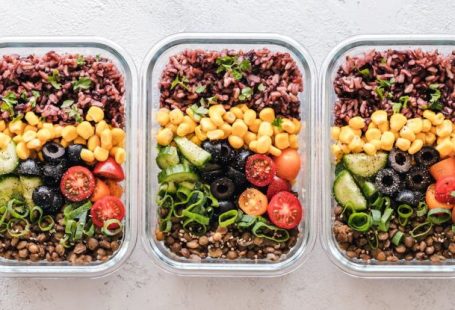Encouraging Picky Eaters to Embrace Veggies
Picky eating habits are a common struggle for many parents when it comes to getting children to eat their vegetables. However, making veggies fun for picky eaters doesn’t have to be a daunting task. By incorporating some creative strategies and thinking outside the box, you can turn mealtime into an enjoyable experience for both you and your little one. Here are some effective tips on how to make veggies fun for picky eaters.
Get Creative with Presentation
One of the simplest ways to make veggies more appealing to picky eaters is by getting creative with how you present them. Instead of serving plain steamed vegetables, try cutting them into fun shapes using cookie cutters or arranging them on the plate in a visually appealing way. You can also create colorful veggie skewers or use dips like hummus or yogurt to make eating veggies more enjoyable.
Incorporate Veggies into Favorite Dishes
Another effective way to encourage picky eaters to consume more vegetables is by incorporating them into their favorite dishes. For example, you can add finely chopped veggies like carrots, bell peppers, or zucchini to pasta sauce, soups, or casseroles. This way, the veggies blend in with the other flavors, making them less noticeable while still providing essential nutrients.
Make it a Game
Turning mealtime into a game can be a fun way to get picky eaters excited about eating their veggies. Consider creating a reward system where children earn points for trying new vegetables or finishing their veggie portion. You can also make eating veggies more engaging by challenging your child to identify different types of vegetables or by turning eating into a fun competition.
Involve Kids in Meal Preparation
Getting kids involved in meal preparation can make them more invested in the food they are eating. Allow picky eaters to help wash, peel, or chop veggies (under supervision, of course) and involve them in the cooking process. When children have a hand in preparing the meal, they are more likely to be curious about trying the final dish, including the veggies they helped prepare.
Grow Veggies Together
If you have the space, consider starting a small vegetable garden with your child. Growing veggies together can be a rewarding experience and can help picky eaters develop a greater appreciation for vegetables. Allow your child to choose which veggies to plant and involve them in watering and caring for the plants. When the veggies are ready to be harvested, your child will feel a sense of pride and accomplishment, making them more inclined to try the fruits of their labor.
Experiment with Different Cooking Methods
Sometimes, picky eaters simply have a preference for how their veggies are cooked. If your child doesn’t enjoy steamed vegetables, try roasting, grilling, or sautéing them instead. Different cooking methods can bring out unique flavors and textures in vegetables, making them more appealing to picky eaters. You can also experiment with seasoning and spices to enhance the taste of the veggies and make them more enticing.
Create a Positive Eating Environment
Lastly, creating a positive and stress-free eating environment is crucial when trying to encourage picky eaters to eat their veggies. Avoid pressuring or forcing your child to eat vegetables, as this can lead to negative associations with food. Instead, focus on making mealtimes enjoyable and relaxed. Praise your child for trying new foods, and be patient as their taste preferences evolve over time.
Incorporating these strategies into your mealtime routine can help make veggies fun for picky eaters and promote a healthier relationship with food. Remember that patience and persistence are key when it comes to expanding your child’s palate. By making veggies exciting and enjoyable, you can instill healthy eating habits that will benefit your child in the long run.





